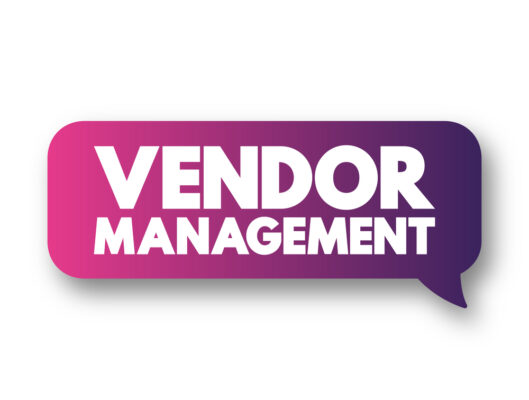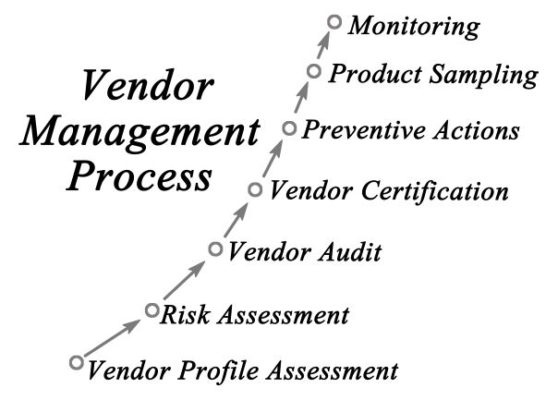A vendor agreement is a significant legal contract that establishes the terms and conditions of a business partnership between an organization and a vendor. It clearly defines the responsibilities of both parties and creates a structure for exchanging goods or services in exchange for payment. This document is particularly important for businesses that depend on vendors to provide products or services.
A vendor agreement is an essential document that clarifies the obligations and responsibilities of both parties. It’s important to reduce risks and avoid misunderstandings or conflicts that may arise during the business relationship. A well-crafted vendor agreement is crucial to safeguard both parties interests and promote a successful and harmonious partnership.
This article will thoroughly examine the essential elements of a vendor agreement, emphasizing its importance in establishing a successful business partnership. It is crucial for organizations to carefully consider the vital factors before signing any such agreements.

What it is
A vendor agreement is a contract that legally binds an organization and a vendor, specifying the terms and conditions of their business relationship. The document outlines the responsibilities and obligations of both parties, serving as a framework for exchanging goods and services in return for payment.
The vendor agreement is crucial for any business that relies on vendors to supply products and services. The vendor agreement typically includes details such as the scope of work, the quality of goods or services to be delivered, the contract term, payment terms, indemnity provisions, and termination clauses.
It may also specify the conditions for a breach of contract and the remedies available to the parties in case of such a breach.
The vendor agreement must be specific about the roles and responsibilities of each party, and it must be carefully drafted to ensure that it complies with all applicable laws and regulations. The vendor agreement provides clarity and certainty to both parties and helps minimize the risk of disputes and misunderstandings.
It ensures that both parties understand what is expected of them and what they are entitled to under the contract. The vendor agreement is essential for managing vendor relationships and mitigating risks. Organizations need to have a well-drafted vendor agreement to protect their interests and ensure that their business relationships with vendors are conducted fairly, transparently, and mutually beneficial.
Purpose and Use
One common application for a contract between a supplier and an organization is establishing specific terms and conditions governing the provision of goods or services in return for compensation. Such an agreement is referred to as a vendor agreement.
A vendor agreement aims to create a legally binding understanding between the parties that outlines their respective roles and responsibilities.
Vendor agreements are particularly common in food fairs, arts festivals, and weddings. In such cases, the vendor agreement defines the conditions and details of the exchange between the vendor and the event organizer. Specificity is critical in such agreements, as it ensures that both parties understand what is expected of them and the consequences of failing to meet those expectations.
By outlining the terms of purchase, services, orders, delivery, acceptance, and non-conforming products, vendor agreements provide a framework that helps minimize the risk of disputes and potential lawsuits.
In general, entering into a vendor agreement has several advantages. Such agreements create clarity about expectations, reduce the likelihood of disagreements, and protect both parties in case of contract violations.
Moreover, vendor agreements can help prevent legal action by ensuring that all parties comprehend their responsibilities and the potential consequences of failing to fulfill them.
Sections and Details
Establishing specific sections and details within a legally binding contract between a supplier and an organization is essential for outlining each party’s roles and responsibilities. Vendor agreements typically include several common sections: purchase terms, services, orders, delivery, acceptance, and non-conforming products.
These sections provide a framework for the transaction, ensuring that both parties understand the terms of the agreement and their obligations under it.
One critical section of a vendor agreement is the terms of purchase, which specify the price and payment terms for the goods or services being provided. This section should outline the payment method, timetable, and any discounts or adjustments that may apply. It may also include provisions for late payments, interest charges, and disputes over invoices.
Another crucial section is the services section, which outlines the specific services the vendor will provide, such as testing, packaging, maintenance, warehousing, and transportation. This section should also establish the timeline for the services and any quality standards or benchmarks the vendor must meet.
The acceptance and non-conforming products sections are essential for ensuring that the goods or services the vendor provides meet the organization’s standards and requirements. The acceptance section should outline the inspection process, including who will inspect the products, when the inspection will occur, and what will happen if the products do not meet the organization’s standards.
The non-conforming products section should specify what constitutes a non-conforming product, how it will be handled, and any penalties or chargebacks that may apply.
Organizations can establish clear expectations and minimize the risk of disputes or misunderstandings by including these and other critical sections in a vendor agreement.

Terms and Conditions
Specifying the terms and conditions of a transaction is a vital step in creating a legally binding contract between two parties. In a vendor agreement, the terms and conditions outline the obligations and responsibilities of both the vendor and the organization.
A vendor agreement’s terms and conditions section typically includes payment, delivery, warranties, and indemnification details. Payment is one of the most critical aspects of the terms and conditions section. This section specifies the method and timeline for payment and any penalties for late payments.
It may also include discounts or adjustments based on the quantity or quality of goods or services. Additionally, the terms and conditions section may outline the consequences of non-payment, such as termination of the contract.
Another important aspect is delivery. This section outlines the expected delivery timeline and any penalties or chargebacks for non-conforming products. It may also include details on the inspection and acceptance of products and the process for revoking acceptance or canceling a purchase order due to non-compliance.
A vendor agreement’s terms and conditions section is crucial to establishing a mutually beneficial and legally binding contract between two parties.
Payment and Dispute Resolution
The payment section in a vendor agreement outlines the method and timetable for payment, ensuring that both parties understand their financial obligations.
Specifying the payment terms and conditions, including payment amount and timing, penalties for late payments, and discounts for early payments is essential. This section should also address the payment currency and any applicable taxes, fees, or other charges.
Dispute resolution is a critical aspect of any contract that involves a vendor. The contract should include a dispute resolution mechanism that outlines the steps to be taken in case of disagreement. The mechanism may involve negotiation, mediation, or arbitration and should specify the jurisdiction and governing law.
It is important to address dispute resolution in the contract to avoid potential legal battles and ensure both parties know their rights and obligations.
A vendor agreement’s payment and dispute resolution sections ensure that both parties understand their obligations and that the contract remains legally binding. A clear and detailed payment section helps prevent misunderstandings and ensures prompt payment.
The dispute resolution section outlines the steps to be taken in case of disagreement, reducing the risk of legal battles and maintaining a positive business relationship.
Frequently Asked Questions
What are some common mistakes to avoid when drafting a vendor agreement?
Common mistakes when drafting a vendor agreement include vague language, incomplete or inaccurate information, inadequate consideration of potential risks, and failure to involve legal experts. It is important to ensure all terms are clearly defined and legally sound.
How can a vendor agreement be terminated early, and what are the consequences of doing so?
Early termination of a vendor agreement can occur through mutual agreement, breach of contract, or termination for convenience. Consequences may include financial penalties, loss of future business, and legal action. Proper documentation and communication are important.
What are some best practices for negotiating vendor agreement terms to minimize legal risks?
Best practices for negotiating vendor agreement terms to minimize legal risks include specifying business terms, outlining legal concepts such as representations and warranties, and addressing consequences such as termination and dispute resolution. It is also important to involve an attorney and use contract management software.
How can a vendor agreement be enforced if one party fails to meet its obligations?
Enforcing a vendor agreement can be achieved through legal action or dispute resolution methods outlined in the contract. Remedies may include damages, specific performance, or termination of the agreement. It is important to consult with an attorney for guidance on enforcing contract obligations.
Are there any specific legal requirements or regulations to be followed when drafting a vendor agreement?
When drafting a vendor agreement, it is important to consult with an attorney to ensure compliance with applicable laws and regulations. The agreement should include specific terms and conditions for exchanging goods and services, payment, termination, and dispute resolution.

Conclusion
To summarize, a vendor agreement holds immense importance as it lays down the ground rules of a business relationship between an organization and a vendor. It clearly defines the roles and responsibilities of each party, minimizes potential risks, and promotes a mutually beneficial partnership.
The purpose and use of vendor agreements are to protect both parties and ensure they are on the same page regarding exchanging goods and services for payment.
The sections and details of a vendor agreement typically include the scope of work, timelines, warranties, confidentiality, termination clauses, and liability. Terms and conditions may cover intellectual property, delivery and acceptance, and quality control.
Payment and dispute resolution are also critical elements that both parties should clearly define and agree upon. A well-drafted vendor agreement can help prevent disputes and ensure a positive business relationship between an organization and its vendors.

Chris Ekai is a Risk Management expert with over 10 years of experience in the field. He has a Master’s(MSc) degree in Risk Management from University of Portsmouth and is a CPA and Finance professional. He currently works as a Content Manager at Risk Publishing, writing about Enterprise Risk Management, Business Continuity Management and Project Management.

